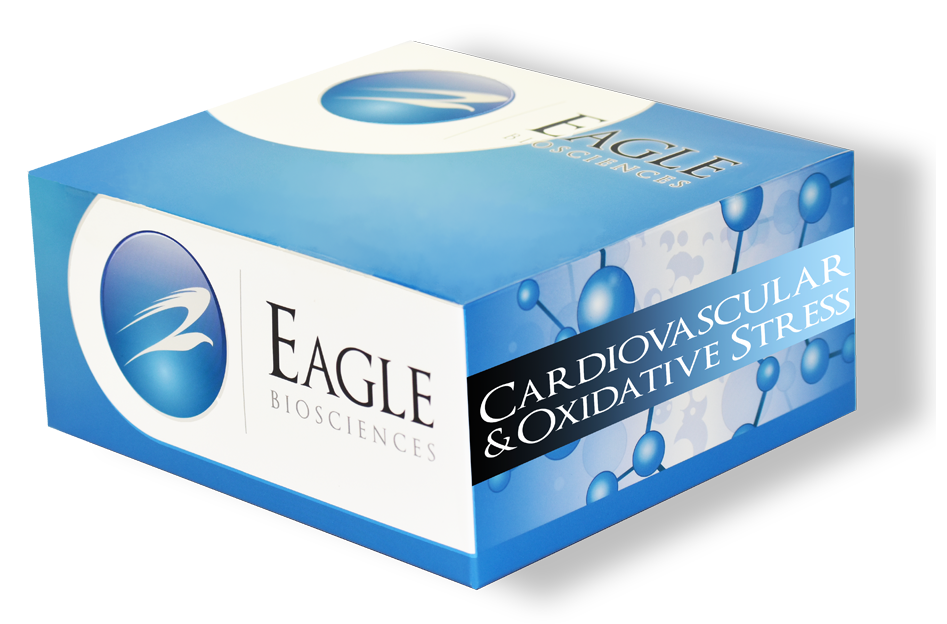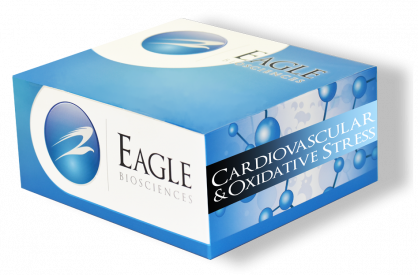Apolipoprotein CI ELISA Assay
The Apolipoprotein CI ELISA Assay is For Research Use Only
Size: 1×96 wells
Sensitivity: 200 ng/ml
Dynamic Range: 156-10000 pg/ml
Incubation Time: 4.5 hours
Sample Type: Serum, Plasma, or other biological fluids
Sample Size: 100 µL
Alternative Names: Human ApoCI
Assay Background
Apolipoprotein CI (ApoCI) is a member of the apolipoprotein C1 family. ApoCI is expressed primarily in the liver, and it is activated when monocytes differentiate into macrophages. A pseudogene of this gene is located 4 kb downstream in the same orientation, on the same chromosome. This gene is mapped to chromosome 19, where it resides within an apolipoprotein gene cluster. Alternatively spliced transcript variants have been found for this gene, but the biological validity of some variants has not been determined. [provided by RefSeq, Jul 2008] Apolipoprotein CI (ApoCI) is an inhibitor of lipoprotein binding to the low density lipoprotein (LDL) receptor, LDL receptor-related protein, and very low density lipoprotein (VLDL) receptor. Associates with high density lipoproteins (HDL) and the triacylglycerol-rich lipoproteins in the plasma and makes up about 10% of the protein of the VLDL and 2% of that of HDL. Appears to interfere directly with fatty acid uptake and is also the major plasma inhibitor of cholesteryl ester transfer protein (CETP). Binds free fatty acids and reduces their intracellular esterification. Modulates the interaction of APOE with betamigrating VLDL and inhibits binding of beta-VLDL to the LDL receptor-related protein.
Related Products
Apolipoprotein CII ELISA Assay Kit
Apolipoprotien CIII ELISA Assay Kit
Apolipoprotein B ELISA Assay
Assay Principle
This assay employs the quantitative sandwich enzyme immunoassay technique. An antibody specific for ApoCI has been pre-coated onto a microtiter plate. Standards or samples are pipetted into the wells and any ApoCI present is bound by the immobilized antibody. After washing away any unbound substances, a biotin-conjugated antibody specific for ApoCI is added to each well and incubate. Following a washing to remove unbound substances, streptavidin conjugated to Horseradish Peroxidase (HRP) is added to each microplate well and incubated. After washing away any unbound antibodyenzyme reagent, a substrate solution (TMB) is added to the wells and color develops in proportion to the amount of ApoCI bound in the initial step. The color development is stopped by the addition of acid and the intensity of the color is measured at a wavelength of 450nm ±2nm. The concentration of ApoCI in the sample is then determined by comparing the O.D of samples to the standard curve.
Assay Procedure
1. Remove excess microtiter strips from the plate frame, return them to the foil pouch containing the desiccant pack, and reseal it. Standards and samples should be assayed in duplicates.
2. Add 100 μl of the Standards and diluted samples into the appropriate wells. Incubate for at least 2 hours at 37°C or incubate overnight at 4°C on a microplate shaker.
3. Aspirate each well and wash, repeating the process 2 times for a total 3 washes. Wash by filling each well with 1× Wash Buffer (250 μl) using a squirt bottle, manifold dispenser, or autowasher. Complete removal of liquid at each is essential to good performance. After the last wash, remove any remaining Wash Buffer by aspirating, decanting or blotting.
4. Add 100 µl of the 1:1000 diluted Conjugated-ApoCI antibody working solution to each well, incubate for 1 hour at RT on a microplate shaker.
5. Aspirate each well and wash as step 3.
6. Add 100 µl of the diluted HRP-Streptavidin working solution to all wells and incubate for 1 hour at RT on a microplate shaker.
7. Warm TMB substrate solution to RT before next wash step. Aspirate each well and wash as step 3. Proceed immediately to the next step.
8. Add 100 μl of TMB substrate solution into each well. Incubate for 2-30 mins at RT on microplate shaker. Avoid exposure to light. Note: Watch plate carefully; if color changes rapidly, the reaction may need to be stopped sooner to prevent saturation.
9. Add 100 μl of Stop Solution to each well and shake lightly to ensure homogeneous mixing.
10. Read the OD with a microplate reader at 450nm immediately (optional: read at 620 nm as reference wave length).
Package Inserts
Please note: All documents above are for reference use only and should not be used in place of the documents included with this physical product. If digital copies are needed, please contact us.


